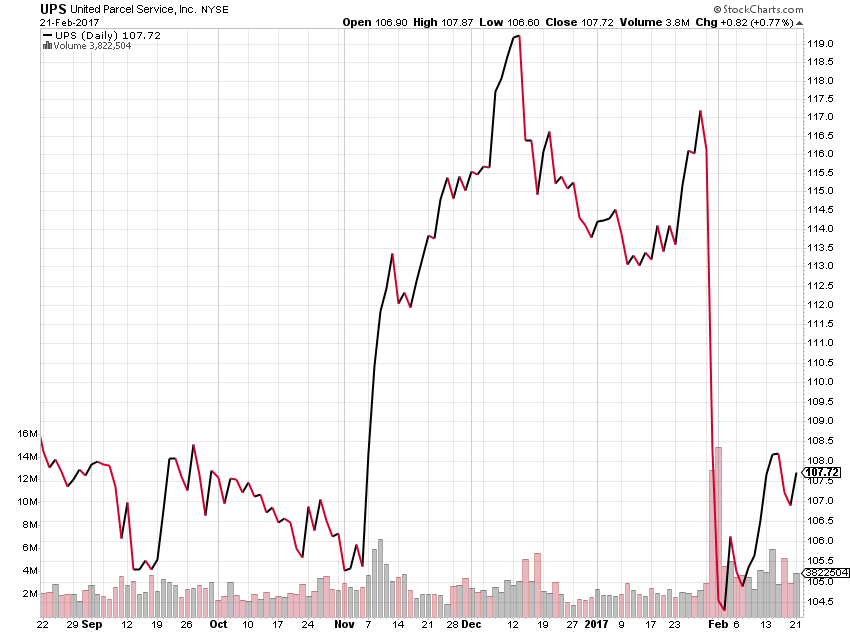Boeing’s 737-Max issues highlight index construction issues
The latest flight tragedy involving Boeing’s (BA) 737-8 Max plane has reignited air travel safety concerns that could pressure Boeing’s business in the near-term. Demand for its aircraft has been and is expected to continue to be powered by international air travel, particularly out of Asia, which fits very well with our Rise of the New Middle-class investing theme. This means the recent drop in BA shares could present an opportunity for investors but depending on what we learn in the coming days we could see the shares trend lower. The issue plaguing the company and its shares is the crash of two 737-8 MAX planes in a relatively short time causing several countries and regions to ground those planes as the causes of the most recent crash are sought.
This has raised several questions for Boeing – How long will those planes be grounded? What does it mean for future 737 family orders and production levels that drive revenue, profits and earnings? The 737 family is an important one for Boeing, as it accounted for 80% of its aircraft backlog entering 2019 and 58% of its January order book. In the past Boeing has quickly dealt with situations such as these, and it has already announced an extensive change to the flight-control system in the 737 MAX aircraft.
Still, we are in a period of uncertainty for the shares, and uncertainty has never been a friend for the stock market or individual stocks. Now to see what comes next.
On a different note, the Boeing issue highlights a key difference in how the major market indices are constructed. These tend to be bench marks by which we and others judge their performance, but there are several differences and intricacies between them. For example, we know the Dow Jones Industrial Average is limited to just 30 stocks, while the S&P 500 is roughly 500 stocks spread across 11 sectors, yielding a more broad based view of the market. For that reason, the S&P 500 tends to be the benchmark of choice for most investors even though the media still tends to focus on the Down.
No matter how many constituents an index has, who the constituents are, and their weightings make all the difference. As we know, the Nasdaq Composite Index tends to be weighted toward technology stocks, while the Russell 2000 is focused on stocks with smaller market capitalizations. Inside the Dow, the weighting of BA shares is just under 10%, which makes it the largest holding inside the index. The next closest constituent is UnitedHealth Group (UNH) at 6.52%. This means moves higher or lower in Boeing shares can have a pronounced impact on the overall index. We’ve clearly seen that over the last few days as Boeing’s shares have fallen more than 10% the Dow’s performance has been markedly different than the rest of the market indices as the Dow has less than 1% while the S&P 500 has risen nearly 2.5%
In examining the S&P 500, we see the reason for that different performance. While nearly 10% of the Dow is represented by Boeing shares, exposure inside the S&P 500 is far more limited at 0.9%. Even though that is more than 1/500thof the S&P it is far, far lower than the weighting contained inside the Dow. The point of this is that to truly understand the movements in the major market indices one needs to understand how these market indices are constructed.
One of the key parts of that understanding is knowing what the holdings and their weightings. This same understanding should also be applied to ETFs as well, especially ones that are based on passive indices. While two ETFs may appear to have a similar strategy and practically the same constituents, the weighting mechanisms between an equal weighted, market cap weighted or a capped market weight approach can produce different returns as well as generate different risk parameters.
As far as the constituents themselves, it goes without saying an investor should be more familiar with the constituents. In the case of Boeing, there are a number of ETFs that hold the shares, but one with sizable exposure is the ETFMG Drone Economy Strategy ETF (IFLY). That ETF, which looks to invest in drones, holds 4.96% of its assets in BA shares, it’s second largest holding. That ETF, which looks to invest in drones, holds 4.96% of its assets in BA shares, even though its revenues from drones and other autonomous systems are so small they aren’t even broken out by the company in SEC filings. We can debate the rationale behind Boeing being the second largest holding, but until the current situation at Boeing is resolved, odds are those shares will have a meaningful impact on both the Dow and IFLY shares.




